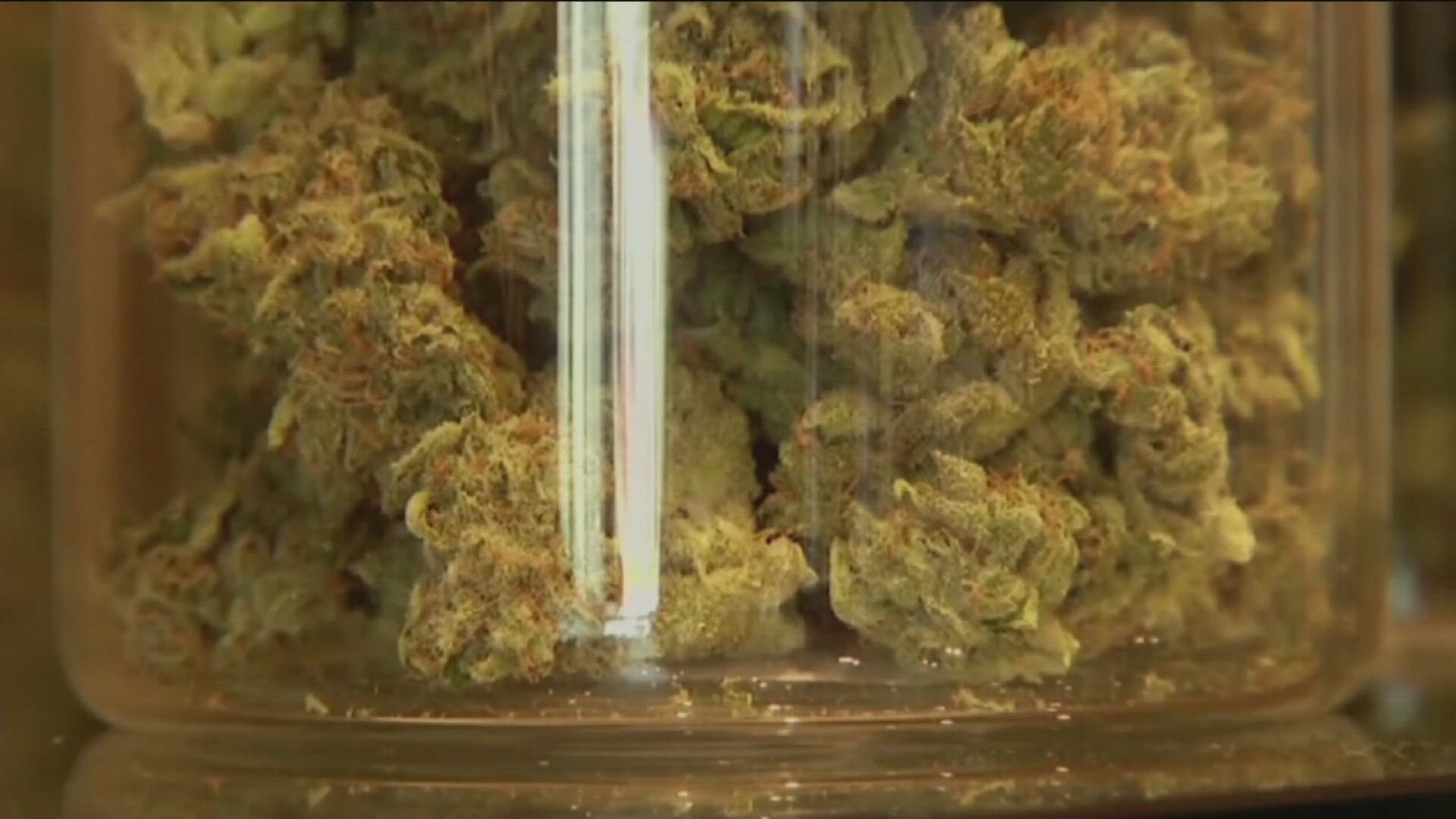OHIO, USA —
After almost nine months, the wait for recreational marijuana sales is almost over.
Ohioans approved Issue 2 in November of last year, legalizing the use of recreational marijuana. But the rollout of licenses has taken some time. The Ohio Department of Commerce on Friday said it will begin issuing non-medical licenses on Tuesday.
Issue 2 outlined how the taxes from recreational marijuana are going to be used. There will be a 5.75% state sales tax, along with a 10% excise tax.
The excise tax will be put into an adult use tax fund, and from there be divided into four categories.
Thirty-six percent will go toward the cannabis social equity and jobs fund. State Rep. Michele Grim (D-Toledo) says this money will go to benefit those who have previously been criminalized for marijuana.
"It'll be able to enhance education, entrepreneurship, legal aide, youth development, violence prevention and the arts," Grim said. "It's trying to right a wrong that we've had for so many decades."
Another 36% will go to the host community fund, which Grim says will allow municipal corporations and townships to use the funds however they approve. 25% will go to substance and addiction funds, to help with not just marijuana, but other drugs like opioids as well. The last 3% will go to the Division of Cannabis Control and tax commissioner fund.
Although Michigan has a different division for how recreational marijuana taxes are divided, Monroe Township supervisor Alan Barron says Monroe Township has seen a lot of benefit.
"Two years ago we received a little over $400,000," Barron said. "Last year, the township just on the taxes from the state received $945,000."
Barron said only 15% of recreational marijuana taxes go back directly to the municipality and 15% to the county. 35% of taxes go toward roads and the remaining 35% go toward education, according to Barron.
Barron said the township is still using American Rescue Plan funds, but some of the money from recreational marijuana sales have gone to building a more accessible playground and contracting two deputies from the Monroe County Sheriff's Department.
Barron said there was originally some controversy surrounding the decision to allow recreational sales, but it has started to calm down.
"I ask, how has this affected your quality of life, other than if you go down Laplaisance Road, the traffic? Other than that, it's not like crime has increased, and with that money, we've hired two additional deputies that cover just our township."
Barron said he has talked to dispensary owners and most are not worried about losing sales once Ohio recreational sales start. He said owners told him on average, 60 percent of their sales are from non-Michigan residents, but people tend to form a loyalty to stores.
The city of Adrian has 11 dispensaries, and in 2023's fiscal year, received $574,314 from the excise tax.
Grim said she hopes to see financial benefit for Northwest Ohio once sales start.
"Especially how close we are to Michigan and we have to compete with Michigan, so I think we really could benefit from that tax revenue staying here locally in Ohio, in Toledo and Lucas County," Grim said.
An Ohio State University study estimates within five years of recreational sales starting, the potential annual tax revenue could range anywhere between $276 million and $403 million.

